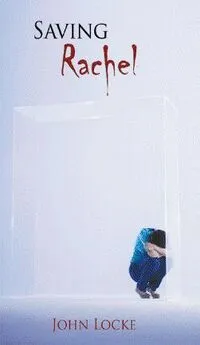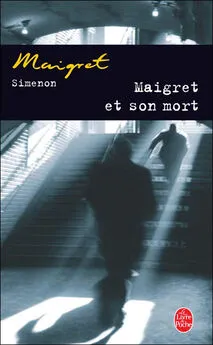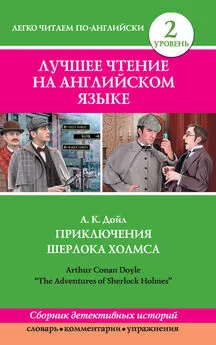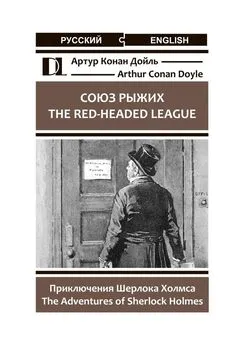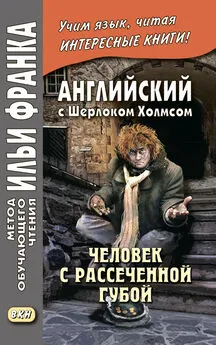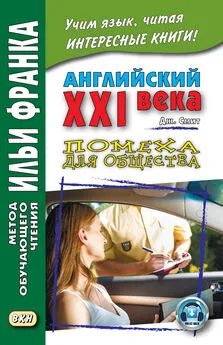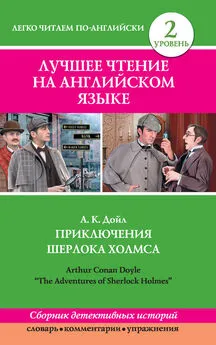John Lescroart - Son of Holmes
- Название:Son of Holmes
- Автор:
- Жанр:
- Издательство:New American Library
- Год:2003
- ISBN:9780451208750
- Рейтинг:
- Избранное:Добавить в избранное
-
Отзывы:
-
Ваша оценка:
John Lescroart - Son of Holmes краткое содержание
John Lescroart offers an engrossing historical mystery that takes us to a small French town in the dark days of World War I-where the rumor is that Auguste Lupa is the son of the greatest detective of all time. And his mysterious legacy may come to light as he attempts to solve the baffling murder of an intelligence agent...
Son of Holmes - читать онлайн бесплатно полную версию (весь текст целиком)
Интервал:
Закладка:
Praise for the novels of John Lescroart
The Oath
A People Page -Turner
“A particularly strong plot.”— Los Angeles Times
“Topical and full of intrigue.”— Milwaukee Journal Sentinel
“Gripping, timely, and extremely satisfying.”— Booklist
“Lescroart skillfully balances his story, blending the action of
the plot with the satisfying details of Hardy’s and Glitsky’s
personal lives. The minutiae of marriages, children, and domestic
routines not only round out the characters but provide
a smart counterpoint to the cops-and-lawyer stuff. And
unlike so many other authors, Lescroart handles social commentary
with a deft touch.”— The Cleveland Plain Dealer
The Hearing
“A spine-tingling legal thriller.”—Larry King, USA Today
“Highly entertaining.”— Chicago Tribune
“Excellent stuff.”— San Jose Mercury News continued . . .
Nothing but the Truth
“The novel’s pacing is reminiscent of classic Ross MacDonald, where a week’s worth of events is condensed into a few hours . . . a winning thriller.” — Publishers Weekly (starred review)
“Riveting . . . one of Lescroart’s best tales yet.” — Chicago Tribune
“A rousing courtroom showdown.” — Kirkus Reviews (starred review)
The Mercy Rule
“A thought-provoking and important novel. . . . Well written, well plotted, well done.”—Nelson DeMille
“Readers of The 13th Juror will already be off reading this book, not this review. Join them.”— The Philadelphia Inquirer
Guilt
“Begin Guilt over a weekend. . . . If you start during the workweek, you will be up very, very late, and your pleasure will be tainted with, well, guilt.”— The Philadelphia Inquirer
“A well-paced legal thriller . . . one of the best in this flourishing genre to come along in a while.” — The Washington Post Book World
A Certain Justice
“Lescroart swings for the fences with a West Coast take on The Bonfire of the Vanities . . . a richly satisfying thriller.” — Kirkus Reviews
The 13th Juror
“Fast-paced . . . sustains interest to the very end.” — The Wall Street Journal
Hard Evidence
“A hefty, engrossing legal thriller . . . compulsively readable, a dense and involving saga of big-city crime and punishment.” — San Francisco Chronicle

For Lisa
This novel is a work of fiction. Names, characters, places and incidents are either the product of the author’s imagination or are used fictitiously. Any resemblance to actual events, locales, organizations or persons, living or dead, is entirely coincidental and beyond the intent of either the author or publisher.
PREFACE
All the events in this book are true, despite the disclaimer which you have just read if you read a book from cover to cover. A certain concession has been made so that living persons involved may not be subjected to inconvenience, scrutiny, or unwanted harassment. Nevertheless, no names have been changed, no places altered. The concession has been the disclaimer, which will convince most of the public that even this preface is fiction, though this is not the case.
PROLOGUE
The Martha Hudson dinner had been set for the sixth of January. To followers of the Master, Sherlock Holmes, this date is as important a day as the year offers, for on January 6, Holmes’s birthday, his followers from all corners of the globe gather to celebrate his genius. On this date in 1983, I was invited to the Hudson dinner in Arlington, Massachusetts.
At the time, I was living in rather cramped quarters in Cambridge, and a free dinner meant much more to me than intellectual stimulation. I hadn’t read many detective stories and knew little about them. However, I’d naturally heard about Holmes and thought the night might prove interesting.
It was bitter cold and snowing—the wet, slushy snow of the city—when I left my apartment wrapped in an old army coat. The suit I had borrowed for the affair was ill-fitting, and I waited in great discomfort for the bus out of Harvard Square. The ride to Arlington took nearly forty-five minutes, and I kept asking myself as I shivered if all this was worth a free meal.
For the past several months, I had been trying and failing to make my living as a songwriter in the Boston area. I had finally taken a clerical job to pay the bills, but after less than a month had given that up. I turned to giving piano lessons and within a few weeks had several pupils, their combined fees totaling about sixty dollars per week.
I met Mr. Kevin James in November during one of my pupils’ recitals. He’d been dragged along by the child’s mother, together with a host of other poor souls, and had stood silently near the back door. As soon as the recital began, he slipped out, and I joined him.
“Enjoying yourself?” I asked.
He leaned languidly against the doorpost. “You go to these affairs often?”
“Naturally. I’m the instructor.”
“How do you stand it?”
I shrugged. “Comes with the job. Normally they serve punch later.” I tapped the pocket of my well-worn coat. “Punch with a punch.”
He grinned. “Don’t mind if I do.”
We became friends, and he had me to his house for dinner two or three times. One night we’d been speaking of detective stories, and he asked me to join him at the Martha Hudson dinner. I was happy to accept.
The dinner was held at a rambling structure in Arlington Heights known, for some obscure reason, as “The Ranch.” The crowd was not exactly what I had expected, consisting mostly of people my own age. They all appeared rather more well-to-do than I, however, which was not surprising.
As drinks were served, we all congregated in the large drawing room, the principal furnishings of which were the bookshelves that lined three of the walls, the huge oil portrait of, I later learned, the Master, and a long table upon which had been set bound copies of some reference works, a violin, a pipe, and a cap. Our host, Mr. Hugo Arrowroot, proposed a toast to Martha Hudson, then to Holmes, after which things assumed a more informal air. We ate a fine dinner of which coq au vin was the main course and, over brandy, fell into a heated discussion concerning the actual existence of fictional characters.
“It all began, I imagine,” said Kevin, “with Dante, when he included in his fictional Divine Comedy portraits of his enemies. I would suppose it’s even an older practice than that.”
“Much older,” offered another of the guests, a hirsute Harvard student. “All the Greek playwrights did it in their comedies. Aristophanes got in a lot of trouble because of it.”
“Not surprising,” Kevin continued, “and we’re all familiar with historical works that are, finally, more fictitious than the most imaginative novel.” Several students chuckled.
Kevin was smoking a briar, sitting on the edge of the table, fingering the open pages of one of the reference works. “But consider this angle. Suppose there was a man whose life was as interesting as could be hoped, and he had a companion who was given to writing. Could that companion refrain from biography? A Boswell to Johnson relationship? I doubt it. But again, suppose that the principal involved eschewed this kind of aggrandizing publicity, for any number of reasons, and forbade his companion to publish. What could they do? One solution would be to publish the biography as a fictional account, using fictional names but actual events.
“I contend that in this theory lies the root of truth in our more celebrated detective heroes.” He paused and relit his pipe.
“You’re not saying that you think Holmes actually existed?” I said.
“Precisely, John, precisely.”
Arrowroot spoke up. “It’s not a new theory at all. As far back as 1900, readers were proposing it. Holmes was still alive at that time, remember.”
“But a man of his supposed stature?” I protested. “I should think that, even fictionalized, he’d be immediately recognizable to the public.”
“James Bond isn’t,” Kevin said.
“James Bond! Come on.”
They shrugged at one another. “It’s been established that he’s alive and working right now. Of course, though it hurts to admit it, Fleming was better at peripherals than Conan Doyle.”
“Peripherals?” I asked.
“You know, names of minor characters, addresses, that sort of thing. Fleming never used real names or addresses, at least so far as we know. And while, of course, Holmes was not named Holmes and didn’t live at 221B Baker Street—actually we think he lived in Bond Street near Selfridges—Conan Doyle couldn’t help but leave a few characters untouched. He was probably leaving us clues. He had such a fine sense of play. But Hugo, here, is really the expert.” He turned to Arrowroot. “Perhaps you’d like to take it from here.”
“All right,” he said, “but I’m sure we’d all be more comfortable sitting down.”
We went out to the hall and brought in more chairs. The novices among us, of whom there were about five including myself, joked about this preposterous theory. When we’d gotten arranged and the brandy had been passed again, Arrowroot, from a large chair near the fireplace, began:
“The characters that Conan Doyle—or should I say Watson?—left intact for us were Martha Hudson and Irene Adler. You’re all familiar with Martha Hudson; at least you should be after this evening. She worked for the man who was Holmes until he died in Sussex Downs, after which she came back to London and worked for Lord Peter Thatcher, of the Bank of London, until 1938. She never divulged Holmes’s true identity, except of course to Thatcher as a reference. In all probability, Thatcher himself knew long before. In any event, when Thatcher died in the bombings of London, the secret of Holmes’s identity was lost forever, since Mrs. Hudson died shortly after she began her retirement, and certainly Conan Doyle never told.
“There was also, as I’ve said, Irene Adler, ‘the only woman,’ according to Holmes. She was, indeed, a famous Continental singer in the late 1800s, who disappeared between the years 1892 and 1894. And mark this: those are the very years that Holmes disappeared after following Moriarty to the Reichenbach Falls.” He paused for a moment.
“I’ve read somewhere,” ventured another guest, “that letters addressed to 221B Baker Street get answered, though.”
Kevin snickered. “Poppycock. A bank clerk answers those letters. They’re not even worth considering.”
“Kevin’s right,” Arrowroot continued. “Those ‘public’ incidentals mean nothing. The man who was Holmes would have never allowed use of so blatant a giveaway. He might just as well have let Conan Doyle use his proper name as his proper address. No, he saw Conan Doyle’s clues, and obviously enjoyed them, as he tolerated them. So the path to the truth follows these clues, not the obvious fictions of names and addresses. And there are a few others. Mycroft, for example.”
Читать дальшеИнтервал:
Закладка:

